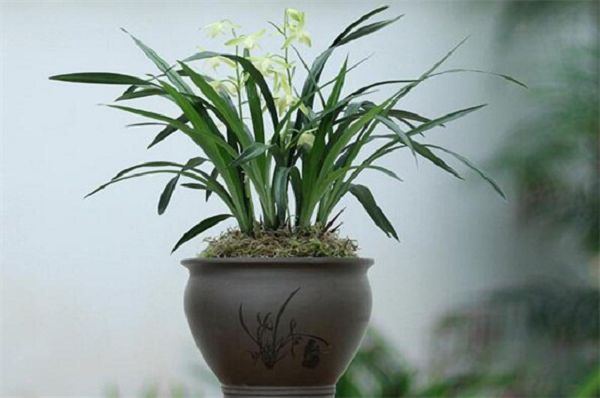Why do orchids need high waist pots?

In the process of orchid cultivation, it is best to choose a deep high-waist basin, because the fleshy root of the orchid needs a lot of space for a long time to grow, in order to improve the ornamental effect, and the high-waist basin is not easy to accumulate water, but also helps to divide the seedlings of the plant, so it is best to use a high-waist basin to facilitate the growth of the orchid.
First, the reason for growing orchids with a high waist
Orchids are traditional flowers in China, and many people plant potted plants. Well, because orchids are plants with fleshy roots, after long-term cultivation, the root growth needs a lot of space, while the general shallow pot is relatively poor in effect, and the high waist basin will make it have better ornamental value.
And another reason is that the high-waist basin is not easy to accumulate water, because in the process of orchid breeding, if there is stagnant water in the basin, it will lead to rotten roots, so it will wither and die soon, and the high-waist basin just makes up for this shortcoming. And breeding with a high-waist basin is also good for dividing seedlings, so it's best not to use a shallow basin.
2. Cultivation methods of orchids 1. Humic soil
Because orchids like to grow in loose, fertile and highly permeable soil rich in organic matter, humus soil, rotten leaf soil, peat soil and coarse sand can be mixed according to the ratio of 4 to 2, 2 and 1, and then add appropriate amount of mature organic fertilizer to the bottom of the pot before planting and pour in a small amount of water.
2. Light treatment
As orchids like to grow in an environment that scatters sunlight, be sure not to be exposed for a long time, it is best to have 4-5 hours of short sunshine every day, and pay attention to proper shading in the hot sun, which usually starts in April. and then put it in the shade every day in the middle of summer.
3. Water and fertilizer treatment
Orchids like to grow luxuriantly under the condition of abundant nutrients, apply base fertilizer solution every 3 to 4 weeks during the growing period, and then appropriately increase a small amount of thin foliar fertilizer in the high temperature season, watering once a day, reducing watering in winter and keeping the basin soil moist.
4. Soil exchange treatment
Because the orchid is a kind of succulent root plant, it is very demanding to the soil, so it is best to change the soil every 1 ~ 2 years, and cut off the old root, whisker root and withered root in time, and then remove the old soil and disinfect it with a small amount of potassium permanganate.
Related
- Is the orchid suitable for indoor use? Is it good for the body?
- How to prevent the empty root of orchids?
- What to do after the crab claw orchid is withered?
- Why are the leaves of orchids always yellow? Fertilizing and watering.
- Can the root of the gentleman orchid be saved if it is rotten?
- Diagnosis and treatment of cotton-blowing beetle insects in Cymbidium
- There is a way for a gentleman's orchid to rot.
- What is the most suitable temperature and humidity for the orchid?
- How to raise a gentleman's orchid? Cultivation techniques of Cymbidium
- How to prepare the nutritive soil for the cultivation of Cymbidium



